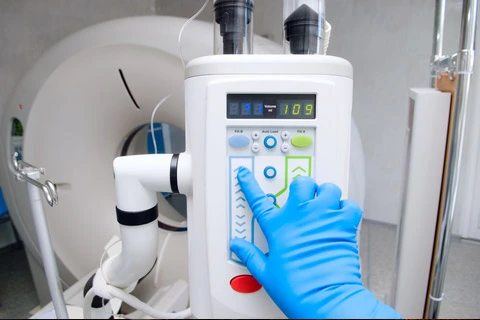Design Safety Guidelines

Design Safety Guidelines, integrated into the principles of design for machinery, are a crucial part of the reduction of risks. Safety improvements can be achieved through the use of specific design and manufacturing techniques, followed by validation through extensive analysis and testing. These standards delineate guidelines for manufacture, remanufacture, installation, and rebuilding of robots as well as safety-related parts of control systems in other machinery. Furthermore, descriptions of the design and installation principles for emergency stops are provided.
ANSI/RIA R15.06 and ISO 13849 - Safety of Machinery and Industrial Robots Package
ANSI/RIA R15.06, ISO 13849-1 and ISO 13849-2
The ANSI/RIA R15.06 and ISO 13849 - Safety of Machinery and Industrial Robots Package provides the safety requirements and guidance on the design and integration of safety related parts of control systems. It specifies the characteristics to identify the performance level required for carrying out safety functions associated with industrial robots and robot systems. It also provides provides requirements for industrial robot manufacture, remanufacture and rebuild; robot system integration/installation; and methods of safeguarding to enhance the safety of personnel associated with the use of robots and robot systems. ANSI/RIA R15.06 and ISO 13849 - Safety of Machinery and Industrial Robots Package includes: ANSI/RIA R15.06-2012 ISO 13849-1:2023 ISO 13849-2:2012
ANSI/RIA R15.06-2012
Industrial Robots and Robot Systems - Safety Requirements
This part of [the standard] specifies requirements and guidelines for the inherent safe design, protective measures and information for use of industrial robots. It describes basic hazards associated with robots and provides requirements to eliminate, or adequately reduce, the risks associated with these hazards.
ISO 13849 - Safety of Machinery Package
ISO 13849-1 and ISO 13849-2
The ISO 13849 - Safety of Machinery Package provides the safety requirements and guidance on the design and integration of safety related parts of control systems. It specifies the characteristics to identify the performance level required to for carrying out safety functions and can be applied to all kinds of safety related parts of control systems regardless of the technology and energy used. Procedures and conditions to be followed for validating safety functions and guidance for the interpretation of ISO 13849 -1 are also provided in the package. ISO 13849 - Safety of Machinery Package includes all parts of ISO 13849.
ISO 13849-2:2012
Safety of machinery - Safety-related parts of control systems - Part 2: Validation
ISO 13849-2:2012 specifies the procedures and conditions to be followed for the validation by analysis and testing of the specified safety functions, the category achieved, and the performance level achieved by the safety-related parts of a control system (SRP/CS) designed in accordance with ISO 13849-1.
ISO/TR 23849:2010
Guidance on the application of ISO 13849-1 and IEC 62061 in the design of safety-related control systems for machinery
ISO/TR 23849:2010 is intended to explain the application of IEC 62061 and ISO 13849-1 in the design of safety-related control systems for machinery.
ISO 13850:2015
Safety of machinery - Emergency stop function - Principles for design
ISO 13850:2015 Standard specifies functional requirements and design principles for the emergency stop function on machinery, independent of the type of energy used. It does not deal with functions such as reversal or limitation of motion, deflection of emissions (e.g. radiation, fluids), shielding, braking or disconnecting, which can be part of the emergency stop function. The requirements for this International Standard apply to all machines, with exception to: - machines where an emergency stop would not reduce the risk; - hand-held or hand-operated machines. NOTE The requirements for the realization of the emergency stop function based on electrical/electronic technology are described in IEC 60204 1.
B11.TR7-2007
Designing for Safety and Lean Manufacturing: A guide on integrating safety and lean manufacturing principles in the use of machinery
This Technical Report provides guidance on the practical application of safety and lean manufacturing principles to machines and manufacturing systems for improving performance, safety and quality by reducing injury and waste. The guidance in this technical report assists machine tool suppliers and users in minimizing waste and risk associated with machines and manufacturing systems, including individual and integrated machine tools and auxiliary components.
PD CEN/TR 14715:2004
Safety of machinery. Ionizing radiation emitted by machinery. Guidance for the application of technical standards in the design of machinery in order to comply with legislative requirements (British Standard)
The purpose of this report is to give guidance on: a) how to comply with the relevant legislative requirements, and b) how to take into account the technical recommendations specified in International, European and National Standards when machines emitting ionizing radiation are designed and built.





